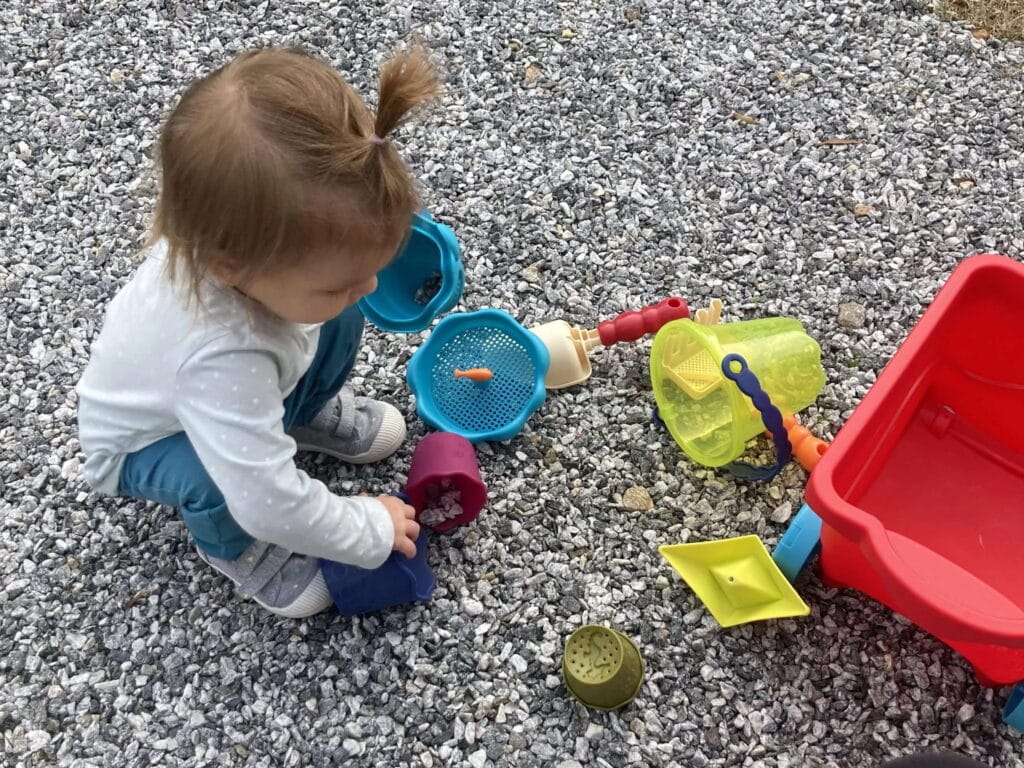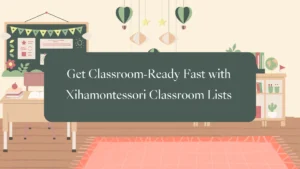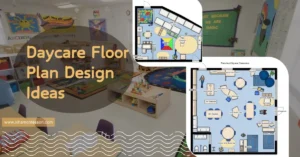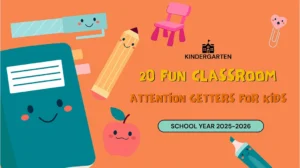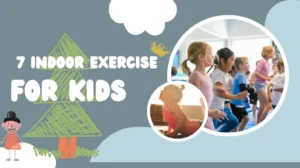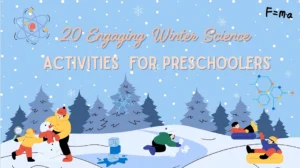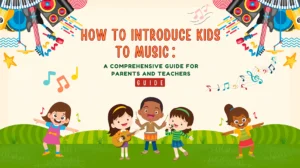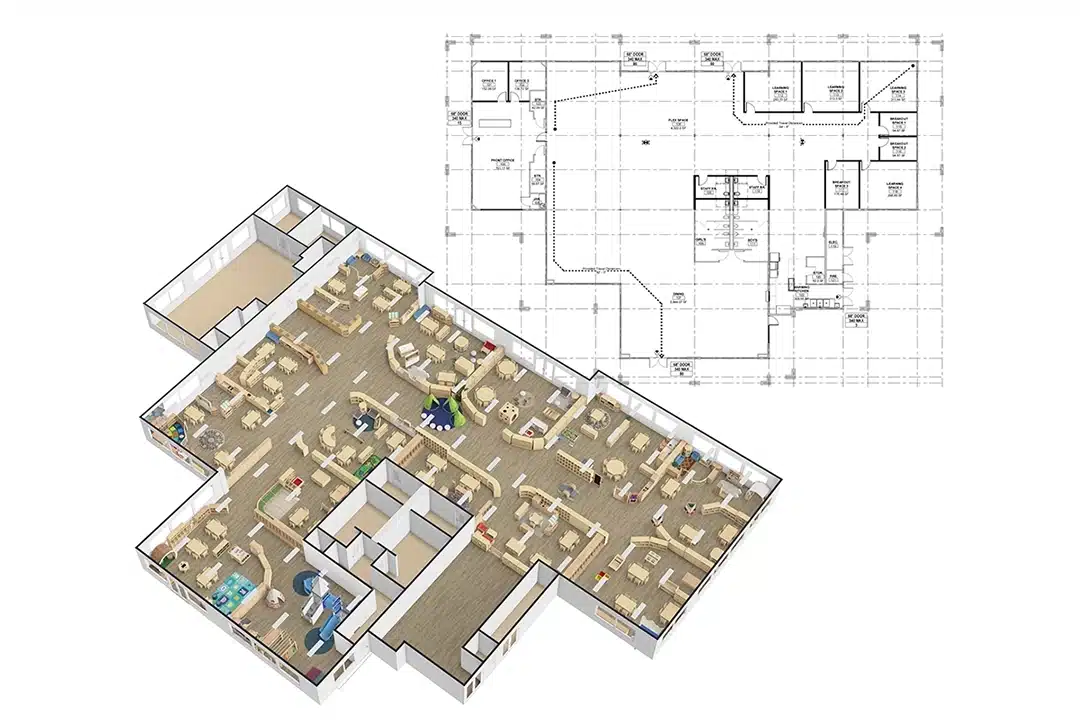Montessori learning can take place practically anywhere. Public, private, and homeschool Montessori programs can and should include plenty of outdoor learning activities.
The best Montessori outdoor activities include practical life skills, such as gardening and washing, and toys like gardening tools, buckets, watering cans, and hoses. Climbing and balance items (stepping stones and balance beams) and sensory items (sandboxes and mud kitchens) are also great choices.
What Does Montessori Say about Outdoor Play?
If you were wondering if outdoor play is aligned with the Montessori method, the answer is definitely yes. Dr. Maria Montessori, the founder of the Montessori philosophy, was a huge advocate for children spending time outdoors. In her book, The Secret of Childhood, she wrote:
“There must be provision for the child to have contact with nature, to understand and appreciate the order, the harmony and the beauty in nature… so that the child may better understand and participate in the marvelous things which civilization creates.”
-Dr. Maria Montessori
Clearly, a Montessori education not only allows for time outside but heavily encourages it. A child will develop both physically and mentally through outdoor play, and they will have freedom for creativity.
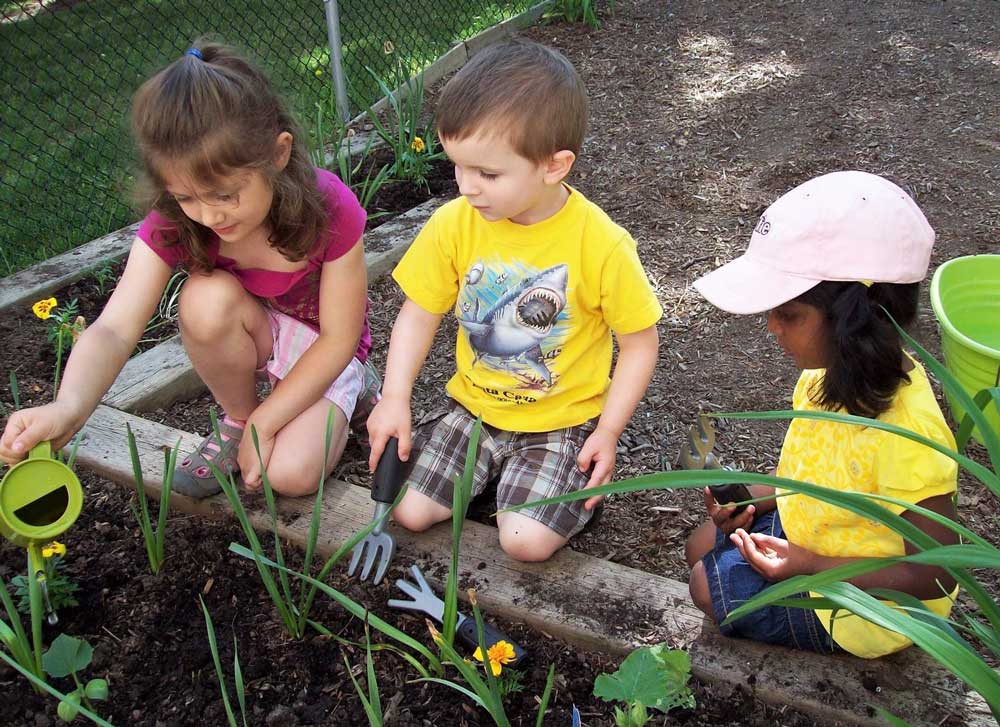
Group play will aid in social health. Taking learning activities out into nature is crucial for the development of a child. They will learn and grow in so many different ways. You likely have tons of opportunities for play and learning in your backyard or neighborhood, but you might also consider special trips to exciting outdoor locations like a beach, forest, park, or nature walk.
Many practical life activities are best done outside. The Montessori philosophy includes an emphasis on teaching children through real-life activities that are part of an adult’s regular life. There are plenty of outdoor chores that could be adapted for child play and learning.
Imaginative play, different from the fantasy that Montessori avoids, can also flourish outside where there are a lot of new objects and environments to experience. All the new items that a child wouldn’t be able to find inside will spark their creativity. Art projects and sensory play become even more intriguing when they are based on outdoor materials.
The physical development benefits cannot be ignored. When you take play and learning outside, there is so much more space for the child to practice their mobility, as well as opportunities for challenging activities like balancing and climbing.
The outdoors provides an ideal environment for practical life activities, imaginative play, sensory work, motor skill development, and concrete learning. Learning activities rooted in nature are inexpensive and effective.
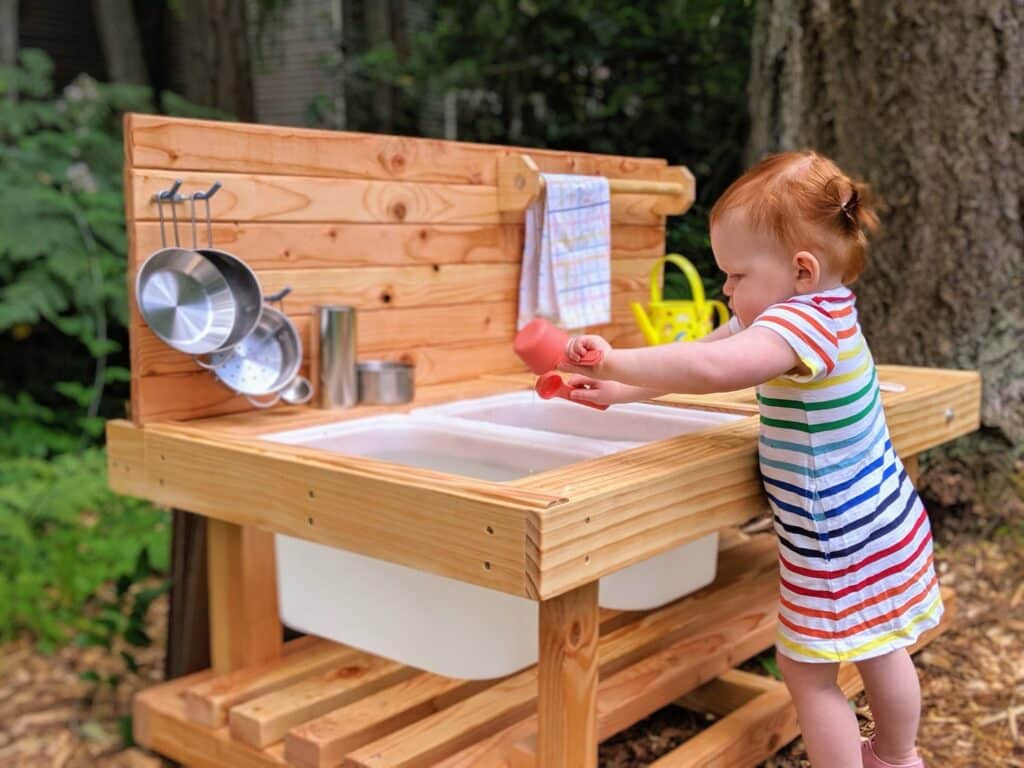
Practical Life Activities
Much of Montessori education is based on children practicing real-life activities rather than what others might think of as “play.” Preparing snacks, washing dishes, and sweeping are some common activities that Montessori children learn and practice. They develop independence and confidence as they are able to successfully navigate the tasks they see the adults in their life doing regularly.
Adults perform certain tasks outside, so it makes sense to introduce some of these tasks to children as well. There are plenty of activities that a child could understand and perform at their developmental level.
One of the best Montessori outdoor activities is gardening. Digging and weeding are excellent sensory activities that will increase dexterity and introduce appropriate challenges. Children will learn about plants as they see their garden grow over time and can gain a better grasp of the life cycle of the food that they prepare and eat inside. They can practice patience while watering and waiting for growth, and they will be intrigued by the different colors and textures that can come from a garden.
With their very own kid-sized gardening toolset, they will feel important and independent while gardening. They can also use their mini gloves, shovels, and watering cans to help with other yard work. Kid-sized “toy” tools will help encourage imaginative play. Montessori encourages children to use their imagination to play and pretend in ways that are based on reality. They could pretend to be a farmer, or imagine that the rocks they dig up are seeds.
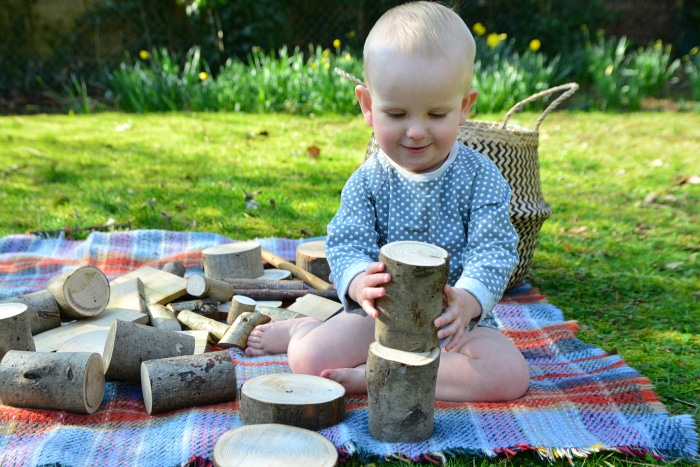
Another great outdoor practical life activity is washing. Lots of water, soap, and grime can get pretty messy, especially with younger children. Taking this activity outside can allow for greater freedom. Being outside also allows for kids to use the hose or wash something large like a car. A child-size bucket or spray bottle like the one in the gardening set may be easier for the child to use. They can wash toys, play equipment, or help you with larger tasks.
Washing is an important skill to learn, and soapy water adds a lot of sensory interest. Children will experience greater motor control, patience, and concentration. Practical life activities will really engage the mind as well as the body.
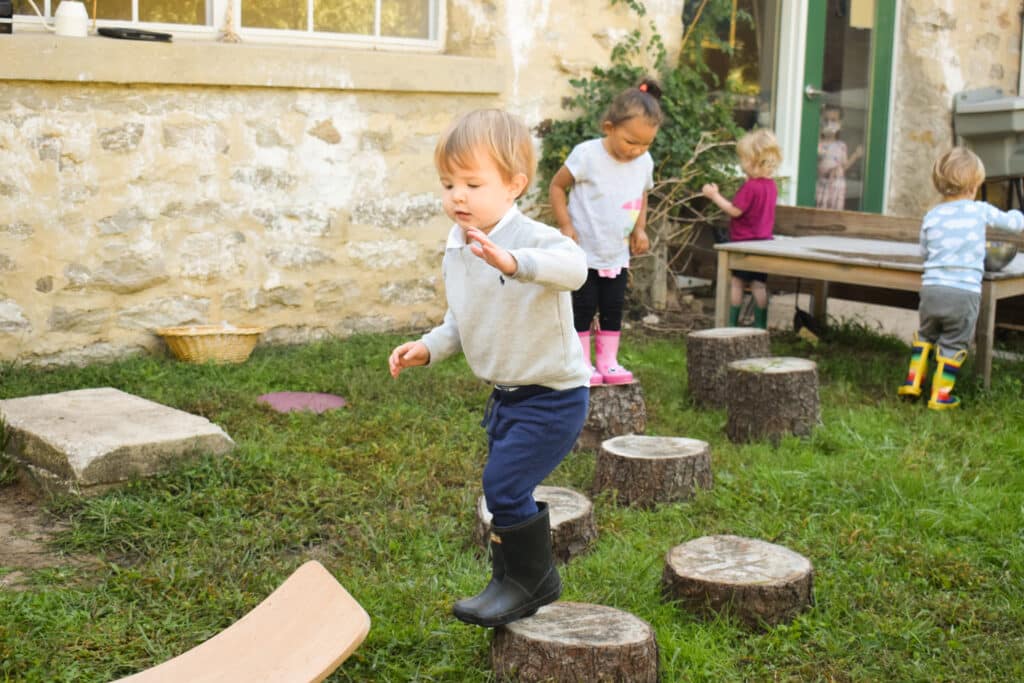
Climbing, Balance, and Movement
When you think of playing outside, you probably think about fun adventures based on physical activity, like running around, exploring, playing tag, or leapfrog. One of the best parts about taking children outside is all of the extra space they have to move.
Physical activity is obviously very important to the physical development of a child. Their coordination, balance, and strength will be greatly improved through outdoor play. Playing outside will also help them to connect with the world around them. Incorporating movement into learning will help kids process and retain information.
There are lots of great activities that mother nature provides all of the materials for. You really don’t need to have anything extra to successfully use the Montessori philosophy in outdoor play. Maria Montessori definitely didn’t have any fancy outdoor equipment in her school. However, there are certain products you can buy to enhance what is already available in nature.
If you are on a tight budget or don’t care for any extras, encourage your kids to climb, jump, and explore using logs, stones, and other natural materials that they can find. Sticks can make the borders on an obstacle course, and logs can be balance beams. You can kick pine cones and climb trees. There are plenty of ways to practice balance, coordination, and movement in a typical backyard space.
However, you may not always be able to count on finding the perfect sticks, stones, trees, and logs appropriate for a young child to play with. For climbing, you might consider purchasing a set of climbing holds that you can use to make a rock wall, or add onto a tree to make more appropriately spaced handholds and footholds.
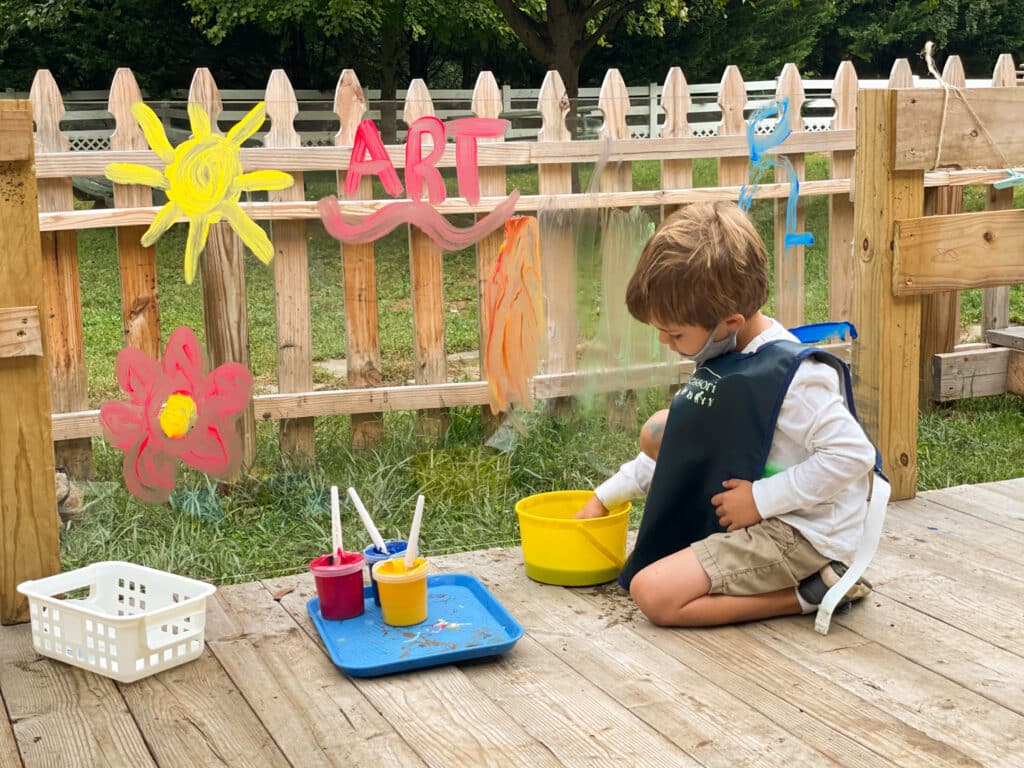
For balance, these stepping stones or this balance beam are portable and dependable. You can arrange the pieces to create developmentally appropriate challenges or even create an obstacle course of sorts. Encourage the child to arrange these materials on their own to create the activities that they think are interesting and appropriate for themselves. Using plastic stones and beams with a non-slip coating will be a lot safer for children who are still struggling with balance.
Bicycles, balls, and jump ropes are great ways to encourage creative movement beyond the classic run, jump, and skip. Providing your child with alternate ways to get their energy out and practice their movement can help encourage them to experiment more and grow stronger.
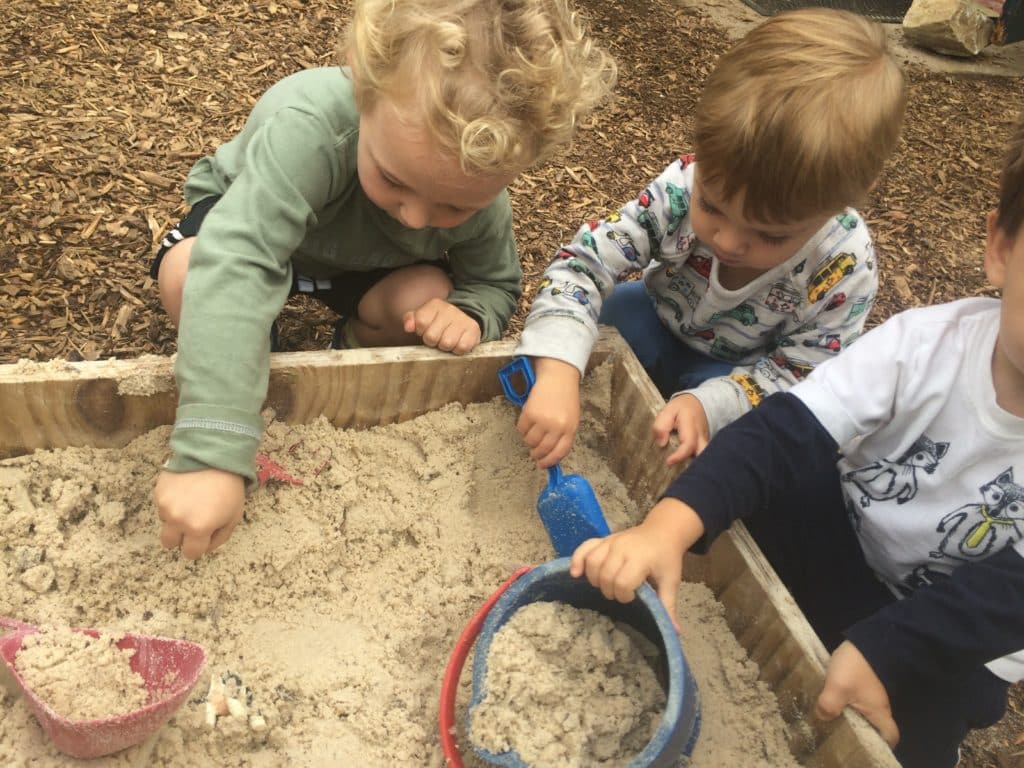
Sensory Play
Nearly everything you find in nature can be used as part of a sensory activity. All the different textures, colors, smells, and sounds are incredibly stimulating. With mindfulness, even just stepping outside could be considered a sensory activity. You can feel the wind, smell the rain, and listen to the birds. Providing an exploration kit with various tools can encourage your child to seek out these sensory opportunities.
Kids seem to love getting messy. Dirt and mud will not only make a kid happy, but it will also aid in their cognitive development. The gardening set is perfect for digging, scooping, and pouring anything they find outside. Another great way for kids to play dirty is with a mud kitchen. Mud kitchens allow kids to “cook” with dirt, sticks, and stones. This is a great way to simultaneously encourage imaginative play and sensory play.
An easy way to switch between various sensory activities is by using a sensory table. Sensory tables are great for indoor or outdoor activities. Honestly, sensory tables are great to do outside whenever possible to help minimize mess and clean up. Dirt, sand, shells, pinecones, rocks, sticks, acorns, leaves, and so much more could be incorporated into a sensory bin.
If you are struggling with ideas of what to put in your next sensory bin activity, take some inspiration from nature. You can include materials straight from your backyard or make a bin that is themed around a certain season or outdoor location. The beach or snow could both make great themes for a sensory bin.
If you don’t like the idea of your kids playing in the mud or dirt, or if you want to provide more options, a sandbox is a great place for controlled digging, scooping, and pouring. It also provides a new texture and building material for kids that are looking for a change.
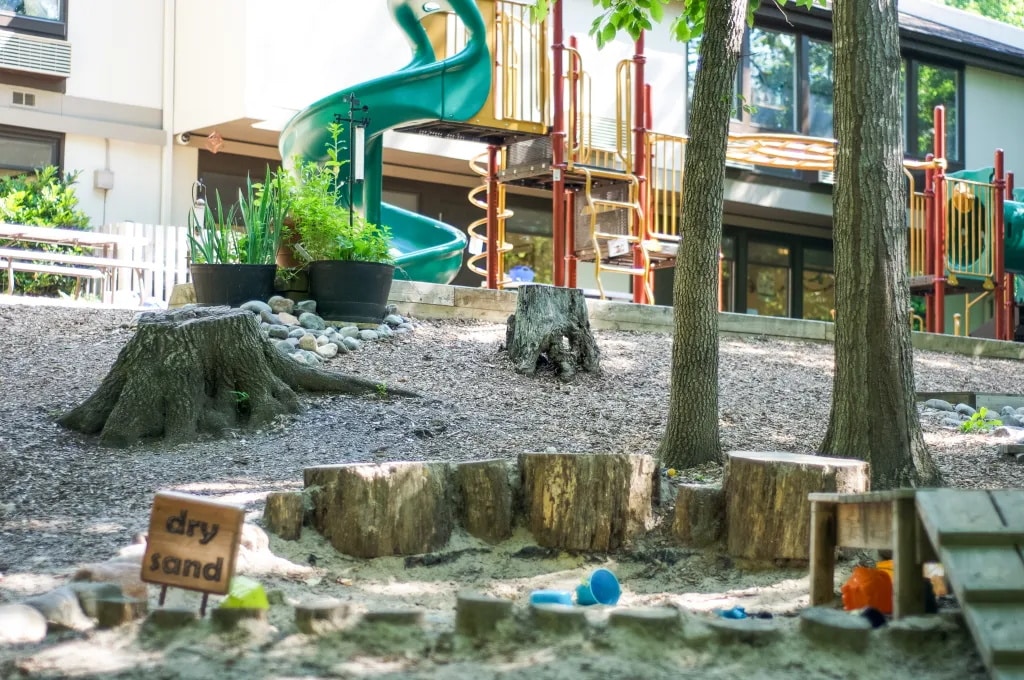
Seasons and Weather Exploration
Mother nature creates her own “toy rotation” with the changes of seasons and weather. It is common practice for parents and Montessori teachers to rotate toys and activities in and out of availability to help maintain interest and keep choices manageable. You don’t ever have to worry about planning rotation for outdoor activities (assuming you live somewhere with multiple seasons and weather conditions).
The four seasons will create slow and gradual changes that continuously introduce new experiences and opportunities. Outdoor play can also change on a day-to-day basis with different weather conditions. You aren’t limited to only playing in sun or shade; you can also take children outside to play in rain and snow for an exciting new experience. Excepting dangerous conditions, of course, there isn’t any “bad” weather for outdoor Montessori play. You just need to make sure that the kids have the proper clothing and gear for whatever is going on outside.
Children can rotate through collecting things like stones, leaves, acorns, seashells, pine cones, and more. Build snowmen in the winter, and make sure to include lots of water play in the heat of the summer. Kids will be fascinated by all the new things they can find and experience and the changes are awesome for their cognitive development.
They can start to gain an understanding of the progression of the seasons, and older kids can learn the science behind weather changes.
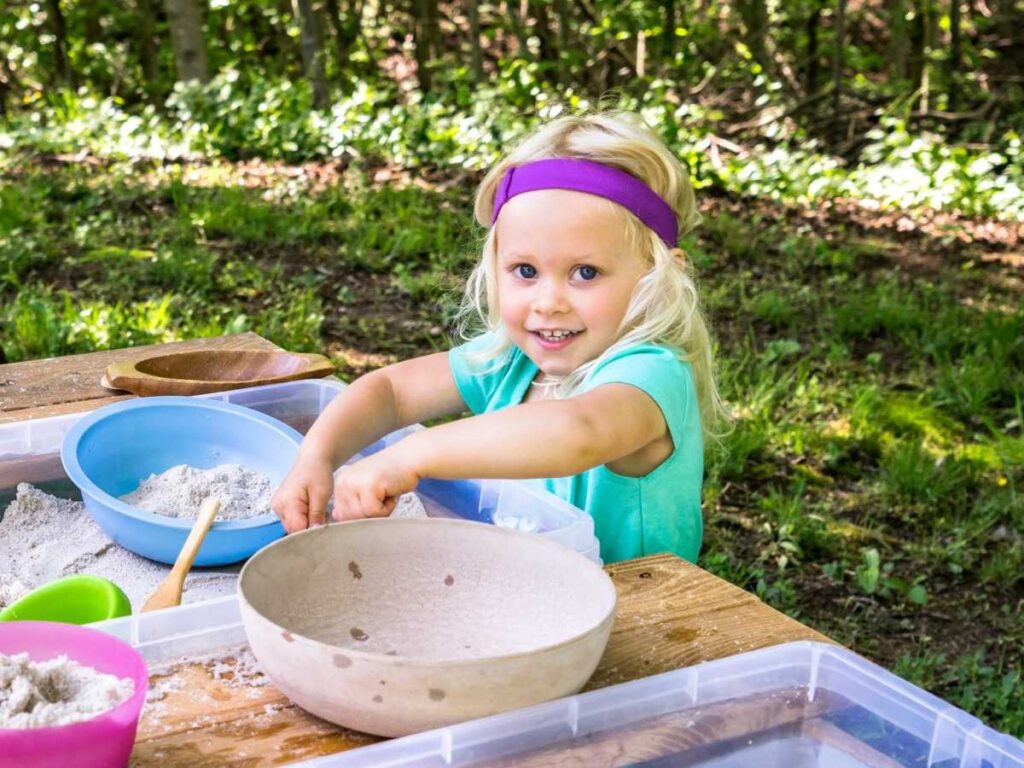
Opportunities to Create
Stepping outside opens the door to limitless creativity. Kids can create art, music, treasure hunts, and more. Encouraging your child to create will help them connect with nature in new and exciting ways. This is great for their cognitive development as they explore possibilities and aids in their independence and confidence. Creativity is super important to the Montessori philosophy. Giving a child space to create freely is incredible for their cognitive development.
Nature can be a great inspiration for artwork. Using colorful leaves and flowers is a great way to change up your kid’s art supplies. They can make all sorts of collages and patterns with natural materials, or even combine them with traditional art supplies as well.
You can make interesting things to look at, and you can also make interesting things to listen to. Help your kids experiment with sound by creating a space where you can hang up bells, old pots and pans, PVC pipes, and any other interesting materials. Kids can use sticks and hands to discover new sounds.
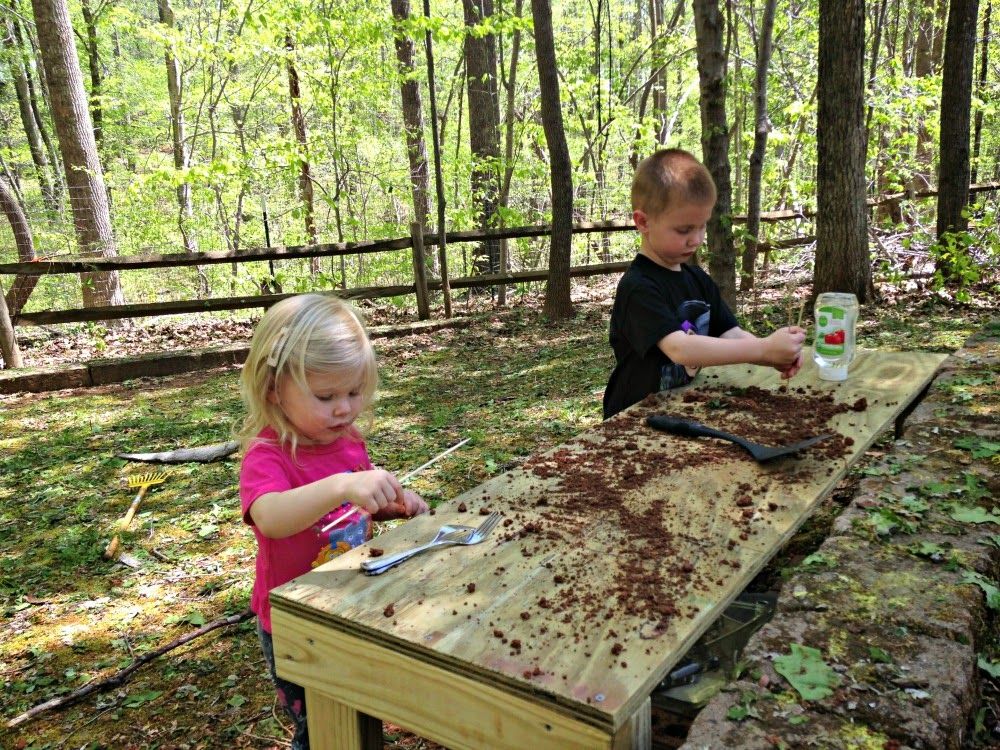
Getting creative with nature goes way beyond pictures. Kids can also create huts, obstacle courses, or treasure hunts. These are great ways for your child to practice independent creativity, and they are also perfect for group play. Teamwork through a treasure hunt or coaching each other through an obstacle course are great activities for social, physical, and mental development.

